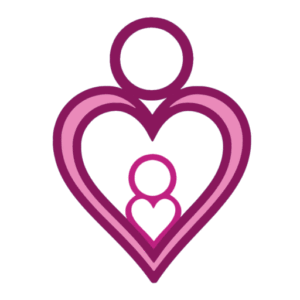POST SUMMIT SALE! NOW THRU MAY 5!
GET $100 OFF COURSES | $50 OFF SELECT SUMMITS
Immediately Improve pelvic floor function and eliminate low back pain
Treating the Postpartum Pelvis

The pelvic bones need to move for baby’s passage, and they don’t always return to their optimal position after birth. What position a person was in when their baby came out is essential knowledge for your assessment and treatment plan.
The pelvic mobilization techniques you will learn in this course will help you identify the causes of and treatment for pelvic pain, back pain or pelvic floor muscle dysfunction. These techniques should be done prior to any intravaginal work.
Bodyworkers with a License to Touch
Recommended For
3.25 Hours
(with PT CEUs)
Course Length
Excellent Course for All Skill Levels
Course Level
Yes, this is required!
***
Required for Certification
What Practitioners Say About Our Courses
Is This Course For You?
Ready to improve your clinical outcomes?
How Does The Online Course Work?
You will have immediate access to your course upon registration
There are downloadable lecture slides and a course workbook for note taking and in depth review
There is a short quiz at the end of the course to ensure learning of key treatment points
This course is offered as an online course and as an annual cohort. Registration for the 2024 cohort will open in August 2024.
Your course includes easy to follow step-by-step instruction and multi-angle videos
Downloadable workbook includes photos and an overview of each technique for quick reference
You have lifetime access to your course creating a valuable reference video library
This course has 3.25 hours of PT CEU credits approved in the state of Colorado and those states that have reciprocity
Course Unit Sneak Peak: Sacral Mobilization Lab
- Identify the 3 common patterns in the postpartum pelvis
- Treat the 3 common patterns in the postpartum pelvis
- Provide clients with an exercise to close the pelvis after birth
- Identify how the pelvic bones move during birth
- Identify how the pelvic bones may be misaligned after birth
- Learn the effects of the bones being out of position
- Learn ways to facilitate balance in the pelvis again
| Module 1 | Introduction | |
|---|---|---|
| Unit 1 | TPP: Intro to Treating the Postpartum Pelvis | 2:06 | |
| Unit 2 | TPP: Table Set Up | 3:33 | |
| Unit 3 | TPP: Treatment Rules and Guidelines | 19:09 | |
| Module 2 | The Pelvis | |
| Unit 1 | TPP: The Pelvis | 39:05 | |
| Unit 2 | TPP: Pelvic Motions for Birth | 14:01 | |
| Unit 3 | TPP: Palpation of the Pelvis (Lab) | 9:17 | |
| Module 3 | Sacral Flexion Pattern | |
| Unit 1 | TPP: Sacral Flexion Pattern | 11:44 | |
| Unit 2 | TPP: Assessing for Sacral Flexion (Lab) | 12:11 | |
| Unit 3 | TPP: Mobilizing Sacral Flexion (Lab) | 8:10 (2 Videos in Unit) | |
| Unit 4 | TPP: Home Program for Treating Sacral Flexion (Lab) | 2:49 | |
| Unit 5 | TPP: Case Study On Sacral Flexion Pattern | 7:36 | |
| Module 4 | Common Postpartum Pattern | |
| Unit 1 | TPP: Common Birth Pattern | 14:01 | |
| Unit 2 | TPP: Sacral Rotation - Prone (Lab) | 4:57 | |
| Unit 3 | TPP: Inferior Glide On Sacrum - Prone (Lab) | 5:45 | |
| Unit 4 | TPP: Sacral Mobilization - Supine (Lab) | 4:37 | |
| Unit 5 | TPP: Sacral Sheer - Prone and Supine (Lab) | 6:06 | |
| Unit 6 | TPP: Body Reactions (Lab) | 5:16 | |
| Module 5 | Posterior Sacrum | |
| Unit 1 | TPP: Posterior Sacrum (Lab) | 4:50 | |
| Module 6 | Ischial Splay | |
| Unit 1 | TPP: Ischial Splay | 11:28 | |
| Unit 2 | TPP: Ilium/Ischium Rebalancing (Lab) | 4:18 | |
| Unit 3 | TPP: Exercise To Close The Open Birthing Pattern (Lab) | 3:26 | |
| Module 7 | There Is More | |
| Unit 1 | TPP: There's More | 5:00 | |
| Module 8 | Course Evaluation and Final Exam | |
| Unit 1 | TPP: Course Evaluation | |
| Unit 2 | TPP: Final Exam |
Improve your clinical outcomes now
Have A Question?
Please email us with any questions and we will get back to you as soon as possible.
